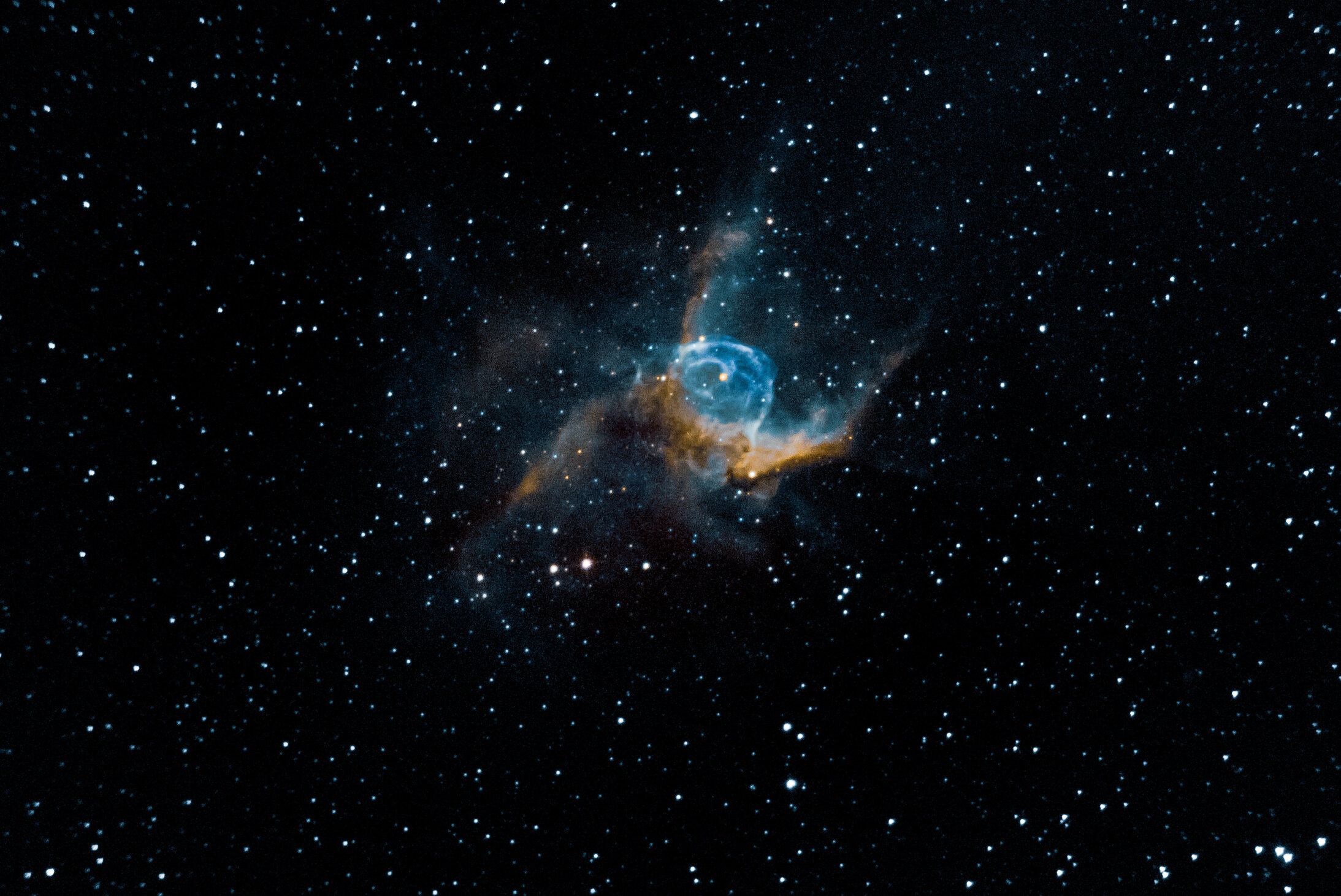
Thor’s Helmet is an emission nebula in the constellation Canis Major. The name of this nebula stems from its striking resemblance to the helmet of the famed Norse God of thunder and lightning. The nebula is approximately 3,670 parsecs (11.96 thousand light years) away and 30 light-years in size. The central star is the Wolf-Rayet star WR7, an extremely hot star thought to be in a brief pre-supernova stage of evolution.
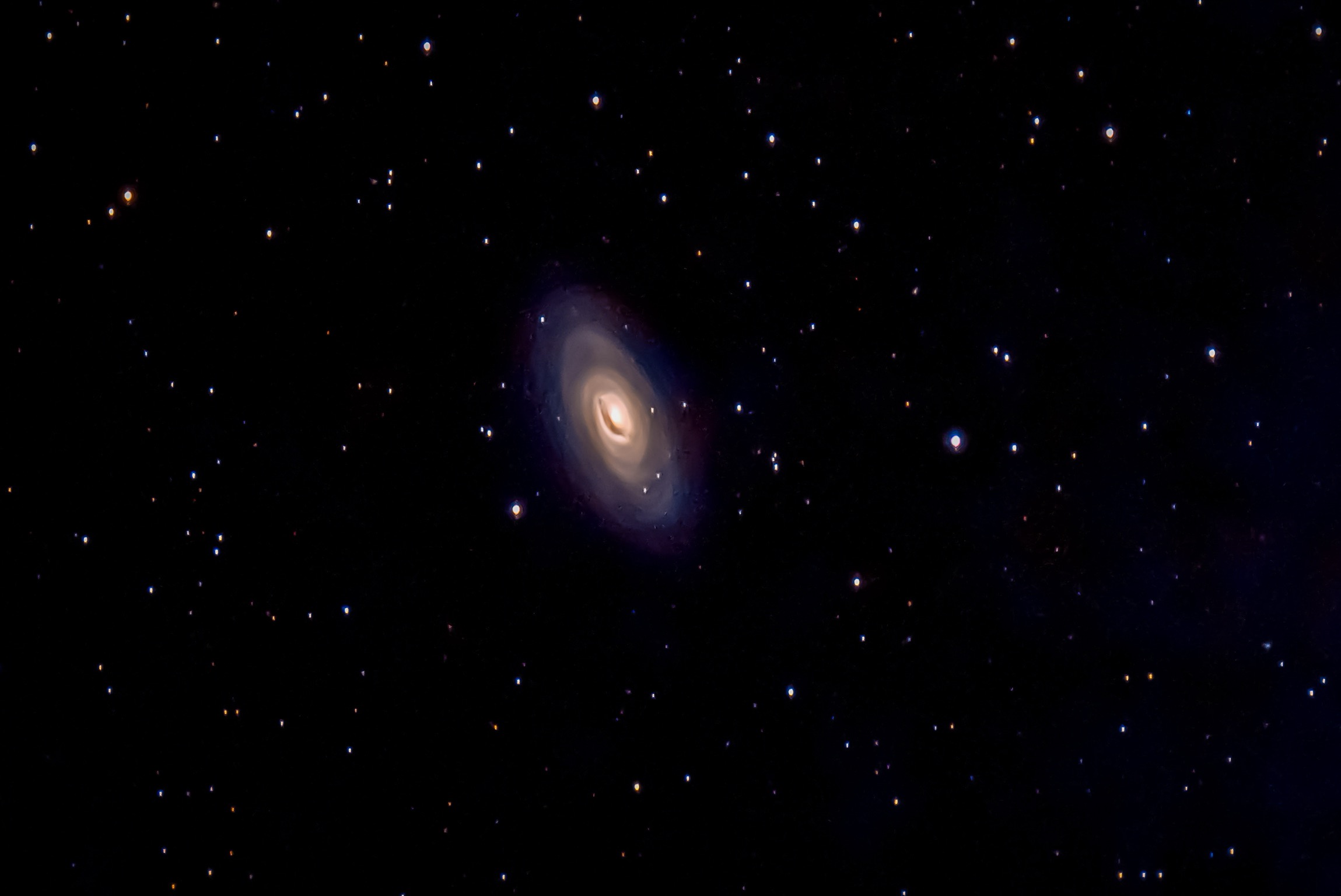
“The Black Eye Galaxy”, also called “Sleeping Beauty Galaxy”, 17.4 million light years away was discovered in March 1779.

Helix Nebula,{ future of our Sun},about 700 light years away.This Nebula sheds outer layers near the end of its evolution.This is also fate of our Sun after 10 billion years.
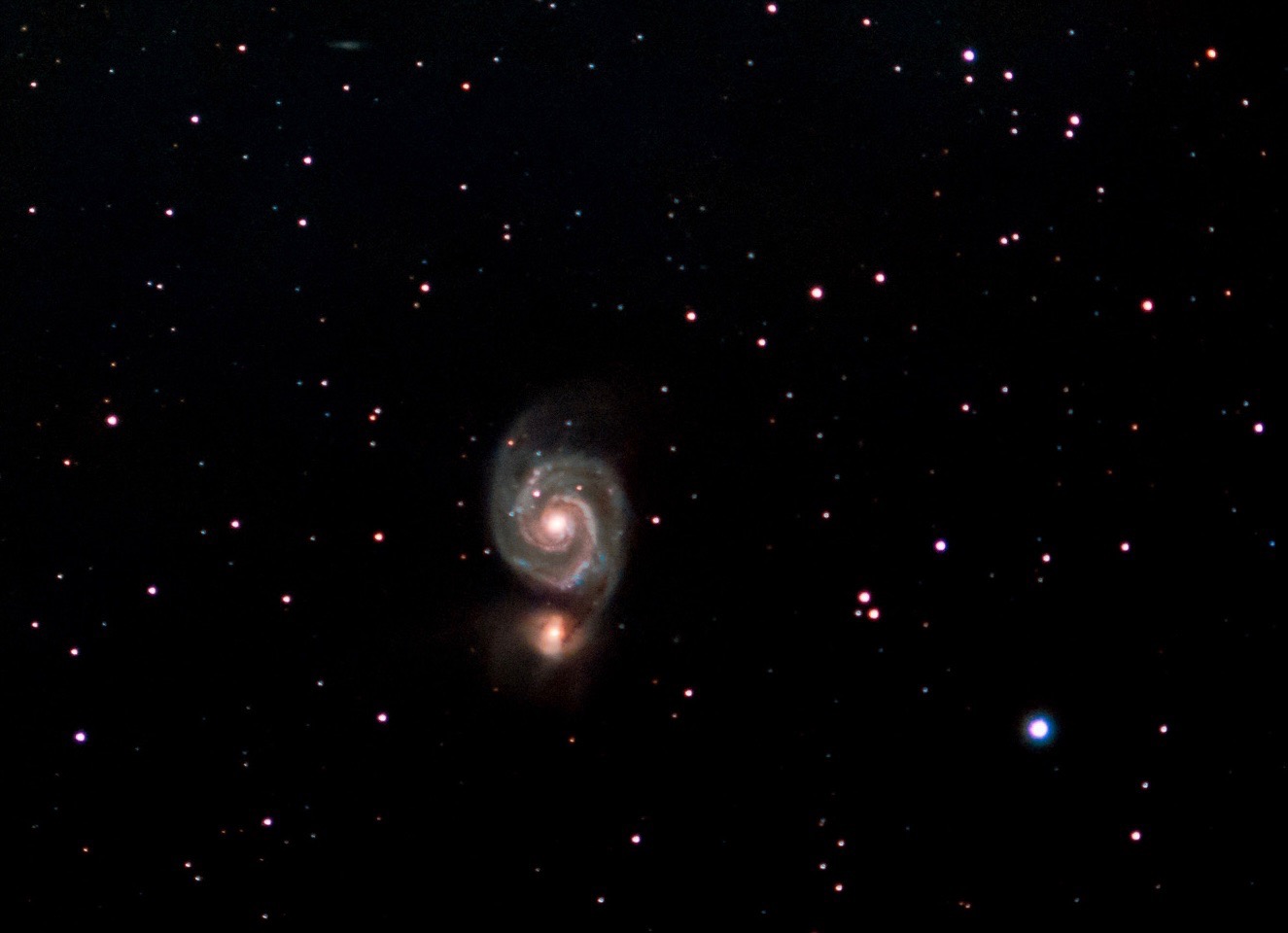
“Whirlpool Galaxy M51”. 25.8 million light-years away.The graceful winding arms of this majestic galaxy appears like a grand spiral.They are actually long lanes of stars and gas laced with dust.
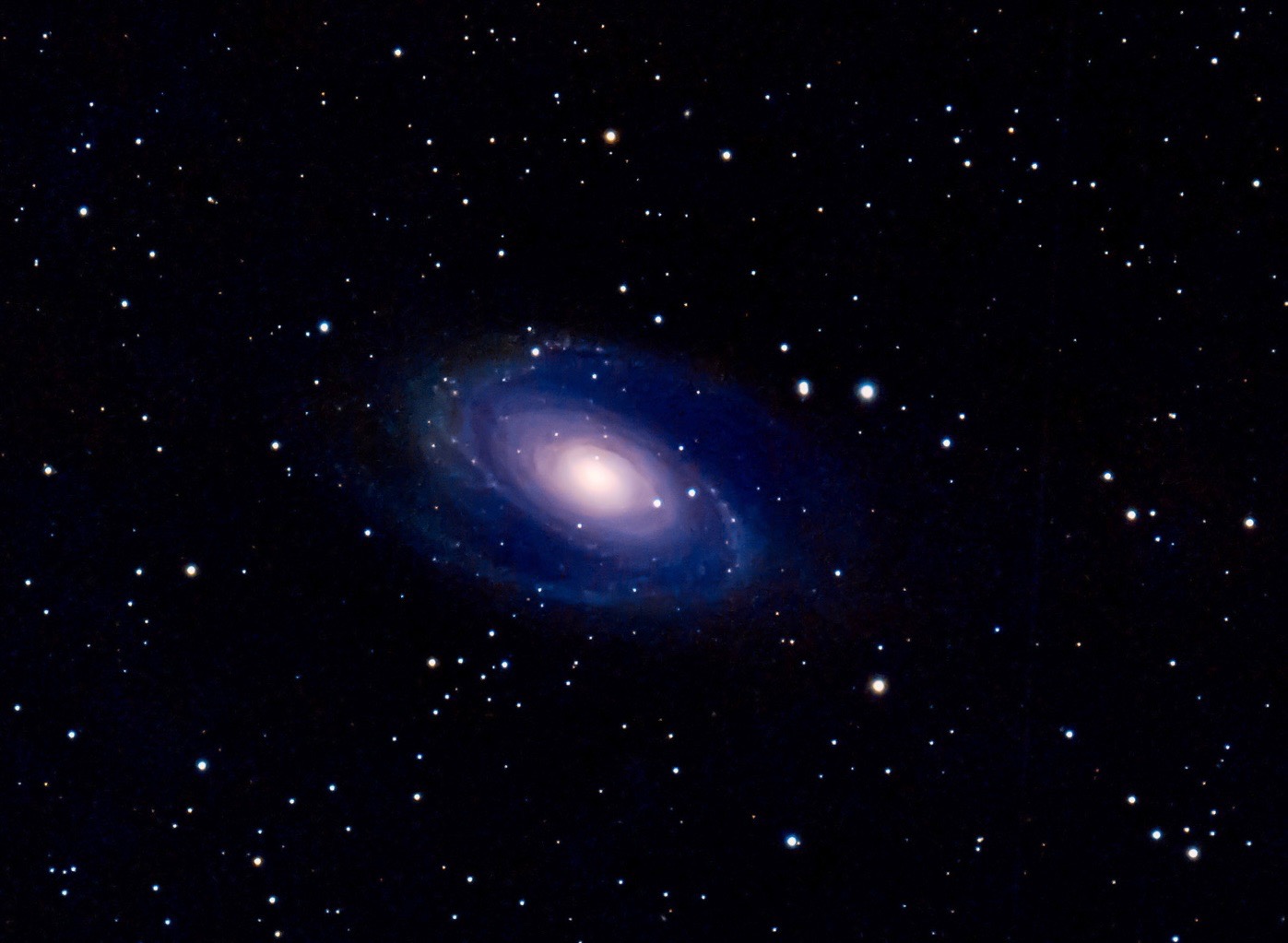
“Bode’s Galaxy M81”, this is grand design spiral galaxy, it is about 12 million light years away discovered by German astronomer in 1774.
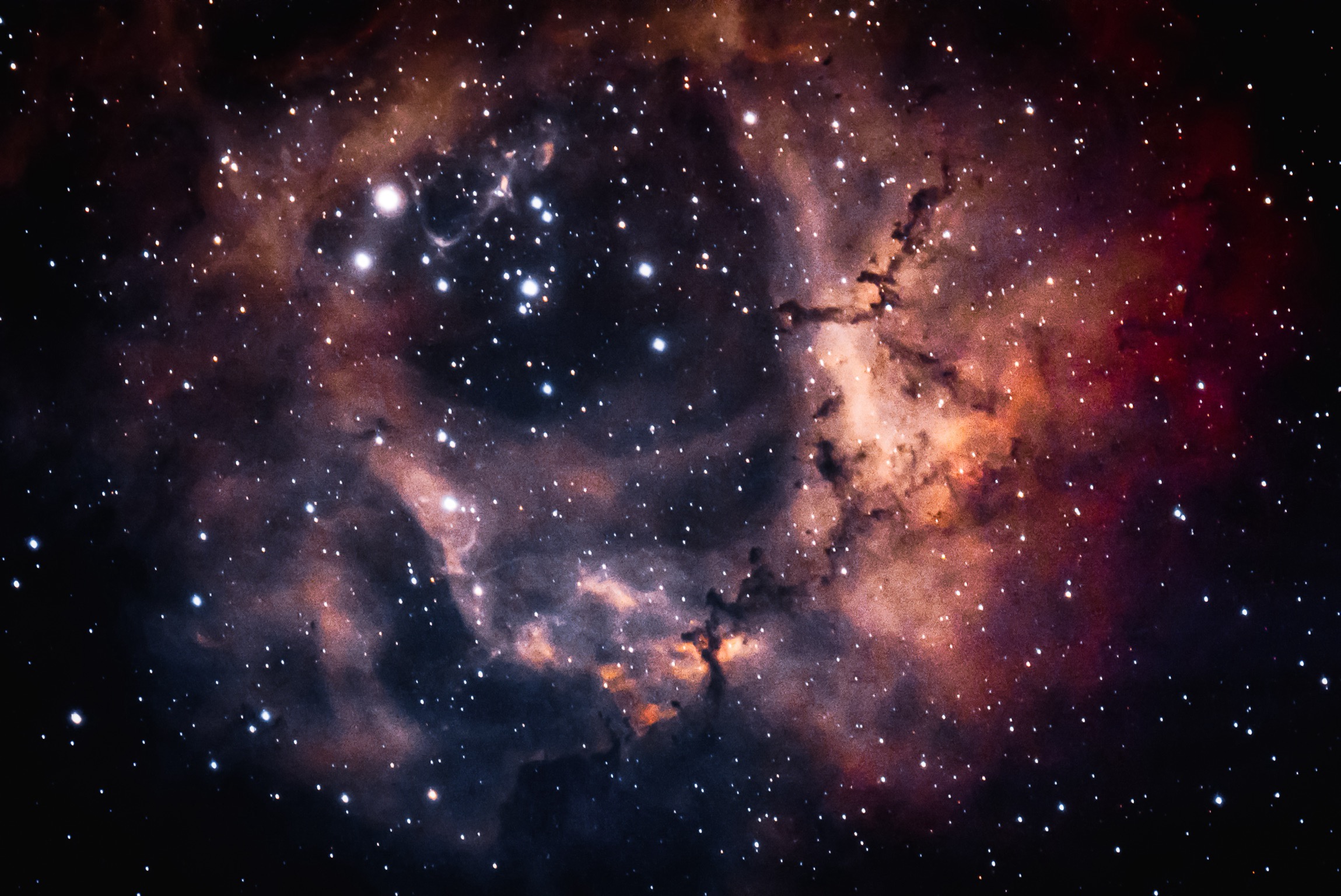
“Rosetta Nebula Caldwell” 49, 5200 Light years away discovered in 1690. Mass of Nebula comprises of around 10,000 solar masses.This is official Oklahoma state astronomical object.
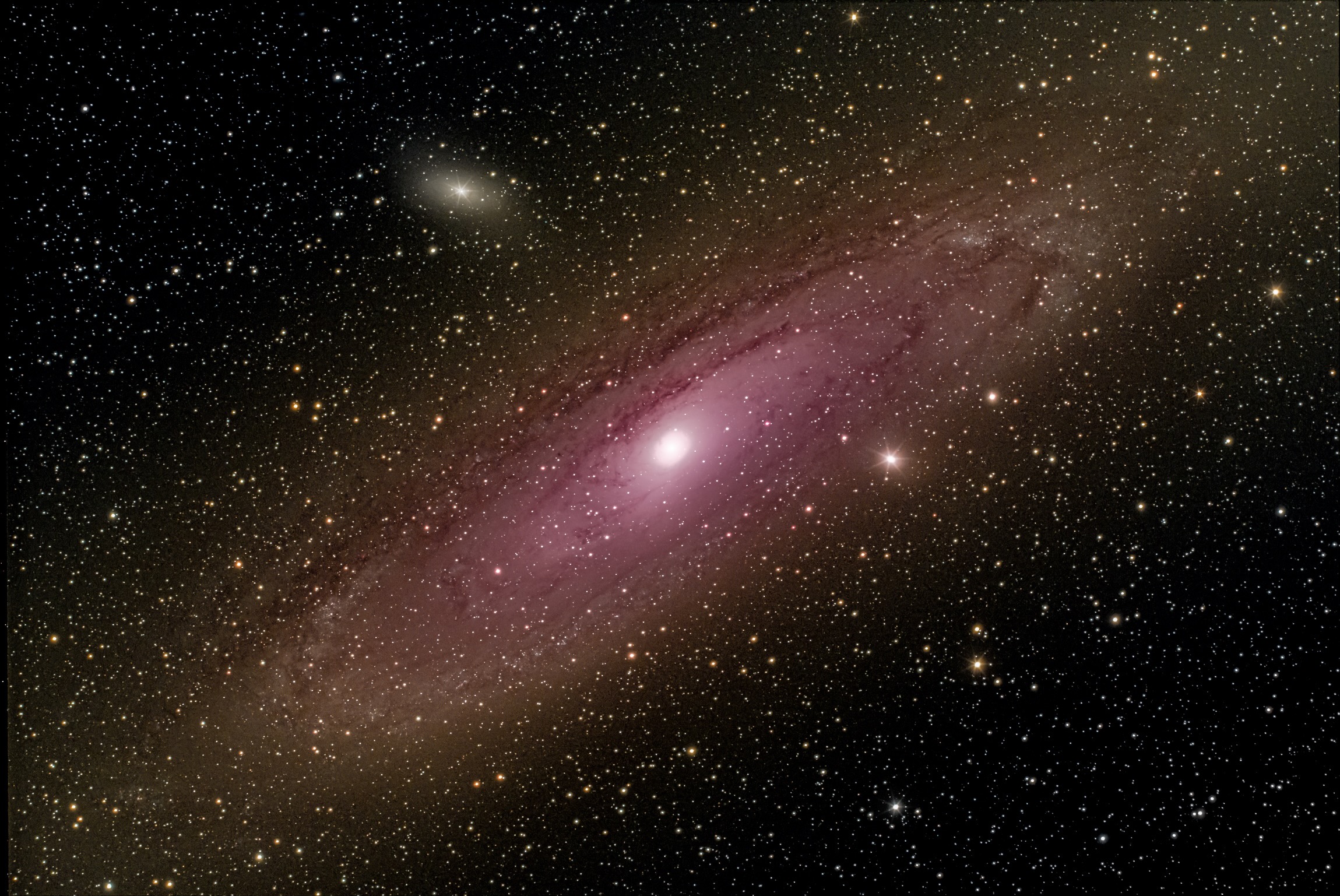
“Andromeda galaxy” 2.5 million light years away.This galaxy is approaching the milky way at 68 miles per second, expected to collide with milky way in 4 billion years.
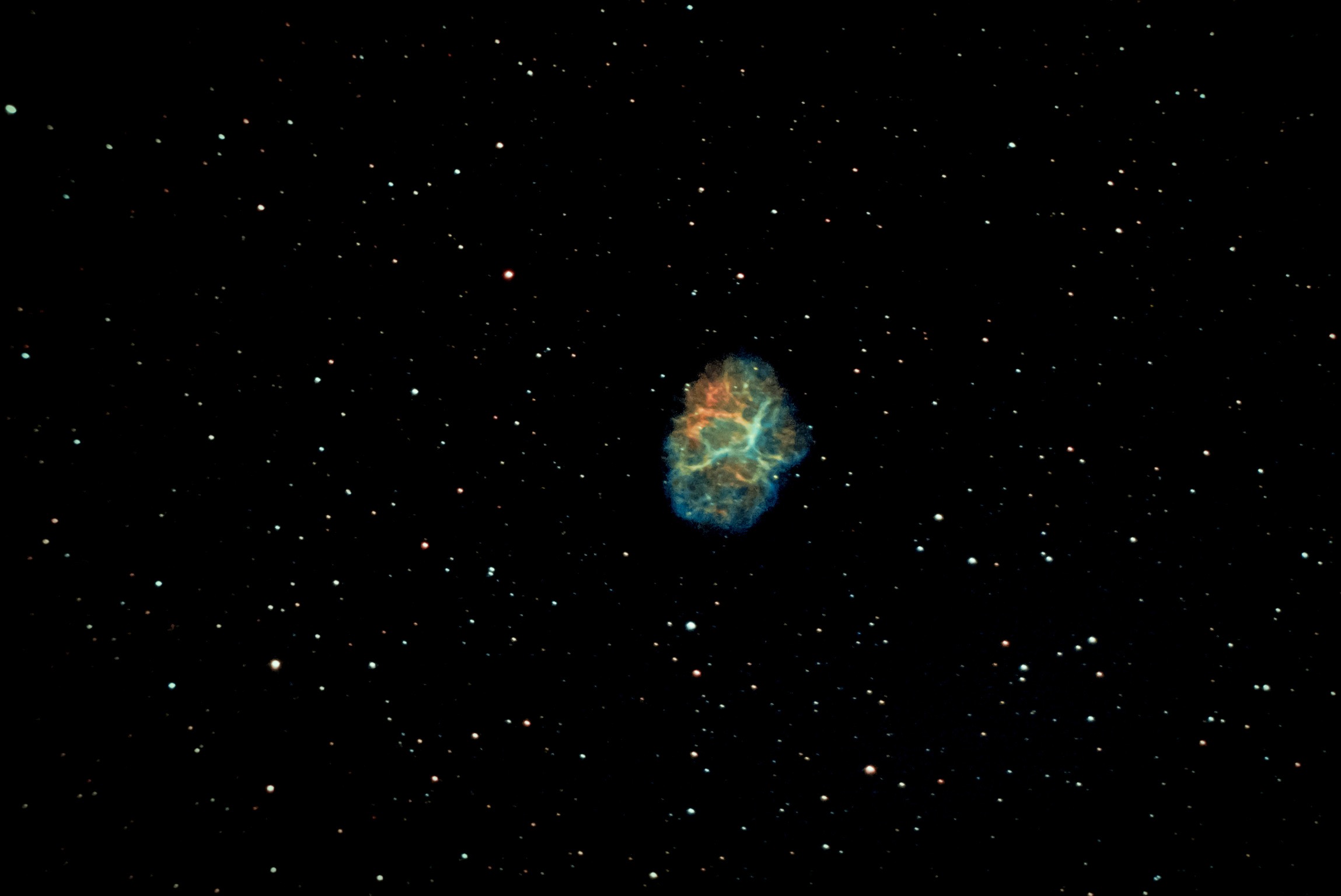
“Crab Nebula NGC 1952” identified in 1731.It was created by a Supernova recorded by medieval astronomers in AD 1054, 6500 light years away.When this supernova appears in 1054 Ad, it was visible during day time for many years.
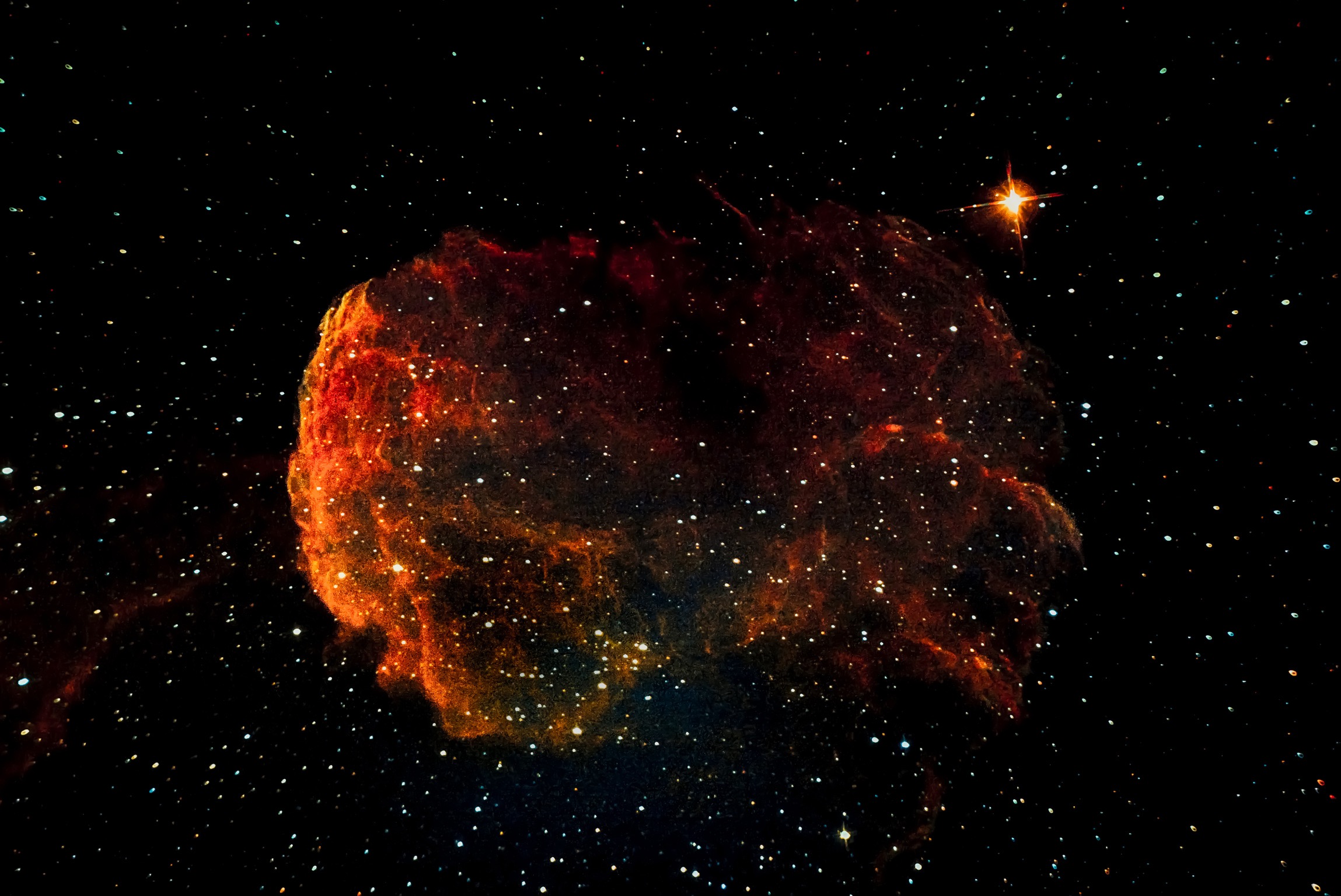
“Jelly Fish Nebula 5000” light years away.Supernovae are final evolutionary stage of massive stars.This process creates nuclear fusion which creates an explosion so bright capable to outshine entire galaxy.The initial burst collides with interstellar medium which produces spectacular colors and glow.
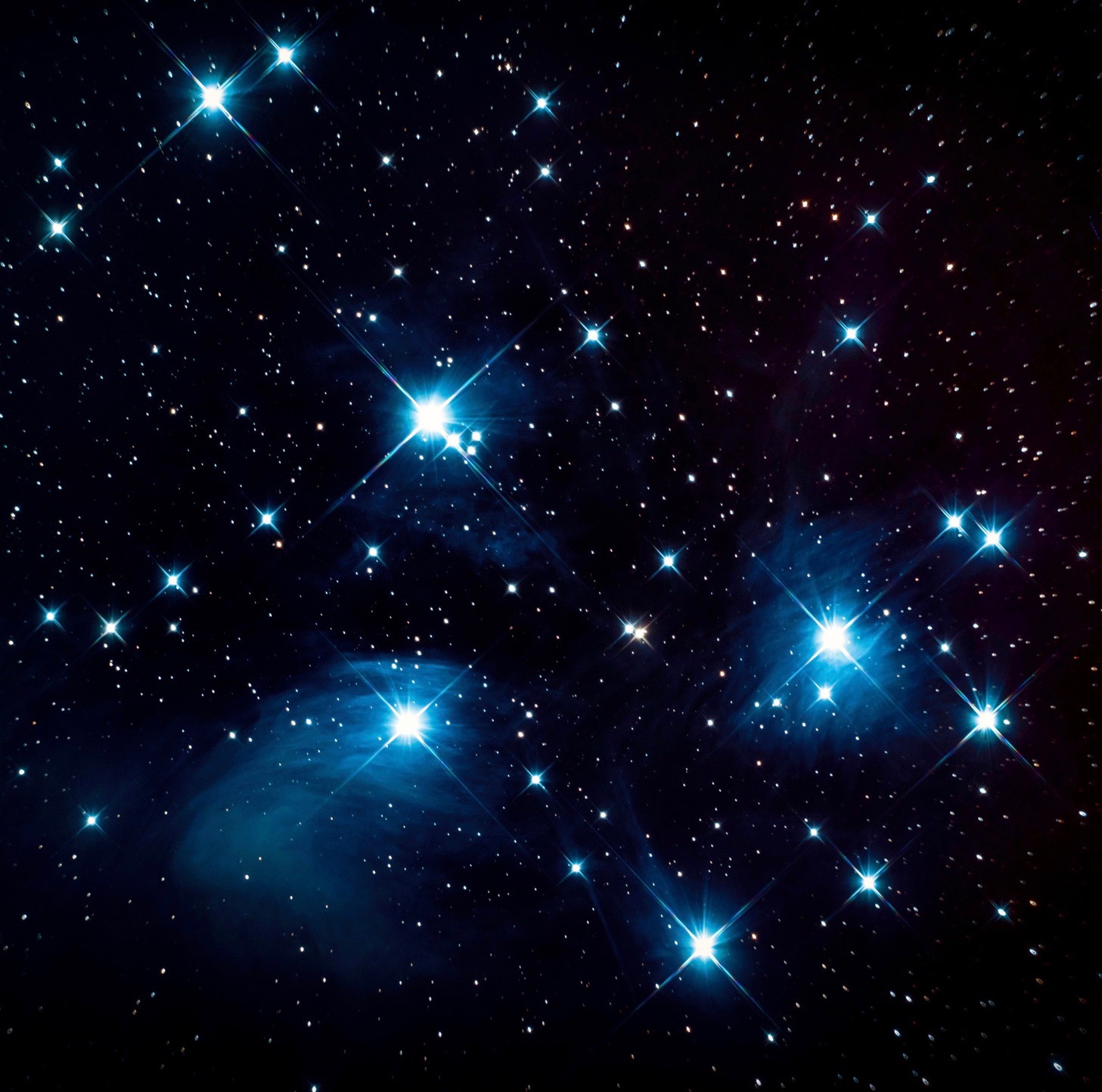
“The Pleiades”, Named after Greek God,also known as “Clusters of Seven Sisters”. This is an open star cluster, meaning group of stars that were born around the same time from gigantic clouds of gas and dust.The stars glow hot blue and form within last 100 million years.
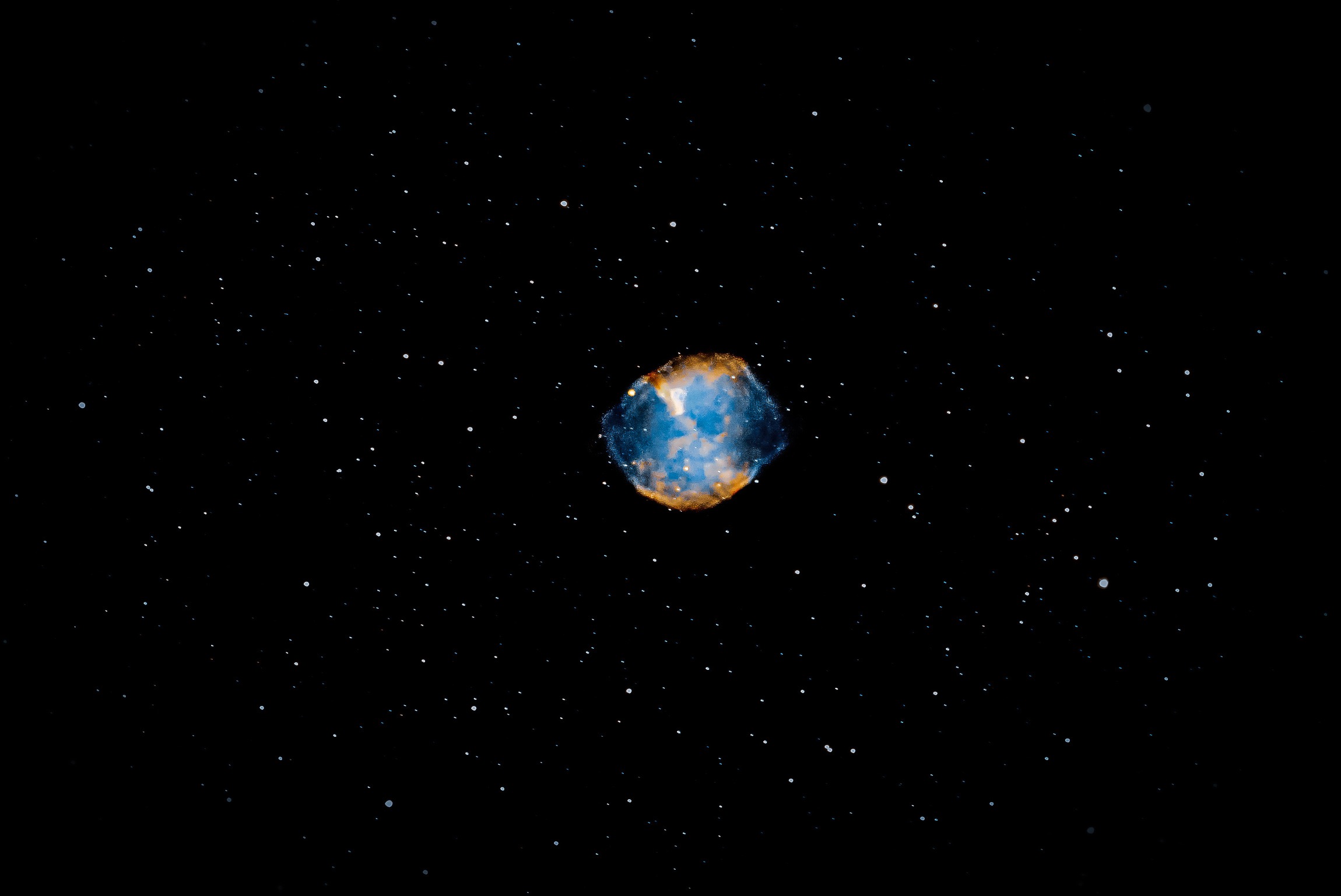
“Dumbbell Nebula” discovered in 1764, one thousand two hundred light years away in the constellation Vulpecula.The Nebula is formed from old star that has shed its outer layers in glowing display of colors.
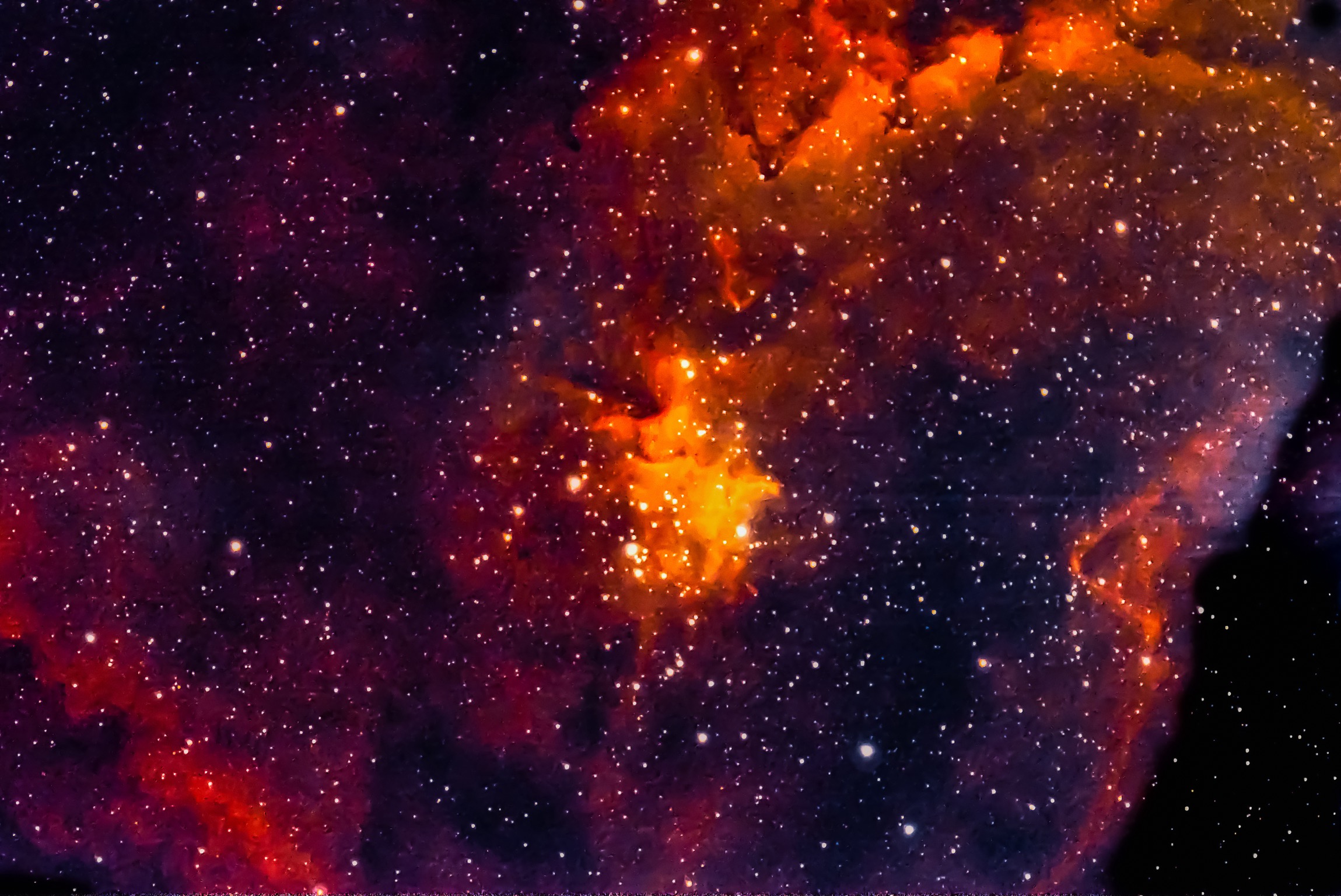
7500 light years away.Nebula’s color depends on its chemical composition and degree of ionization.Due to hydrogen in interstellar gas and low energy of ionization many emission nebulae appear red due to strong emissions.
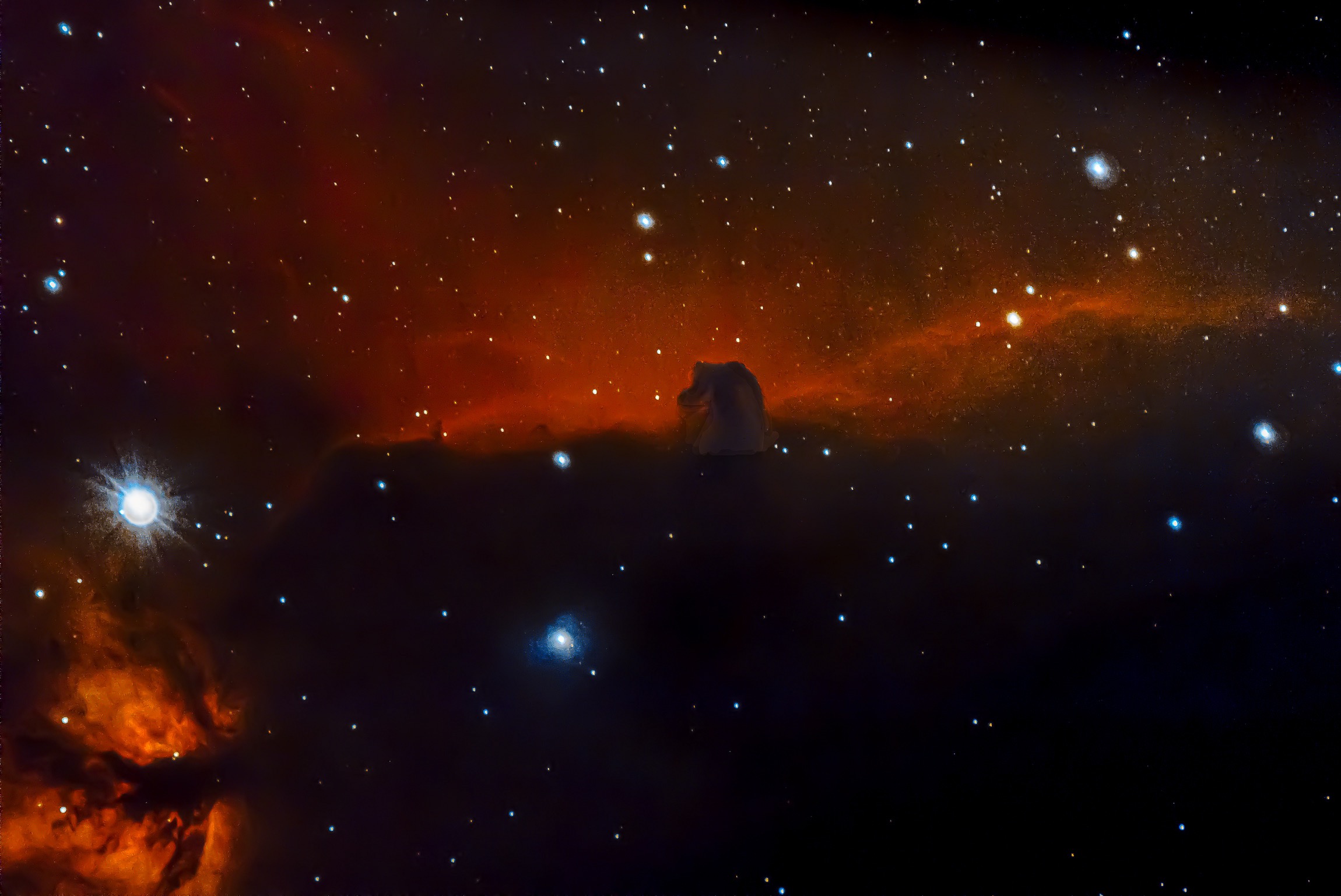
“Horsehead and flame Nebulae”, about 1400 light years away. First imaged at Harvard College Observatory in 1888.The magnetic fields channel the gases leaving the nebula into streams shown as foreground streaks against the background glow.Bright spots in the Horsehead nebula’s base are young stars.Flame nebula is a cluster of newly formed stars.
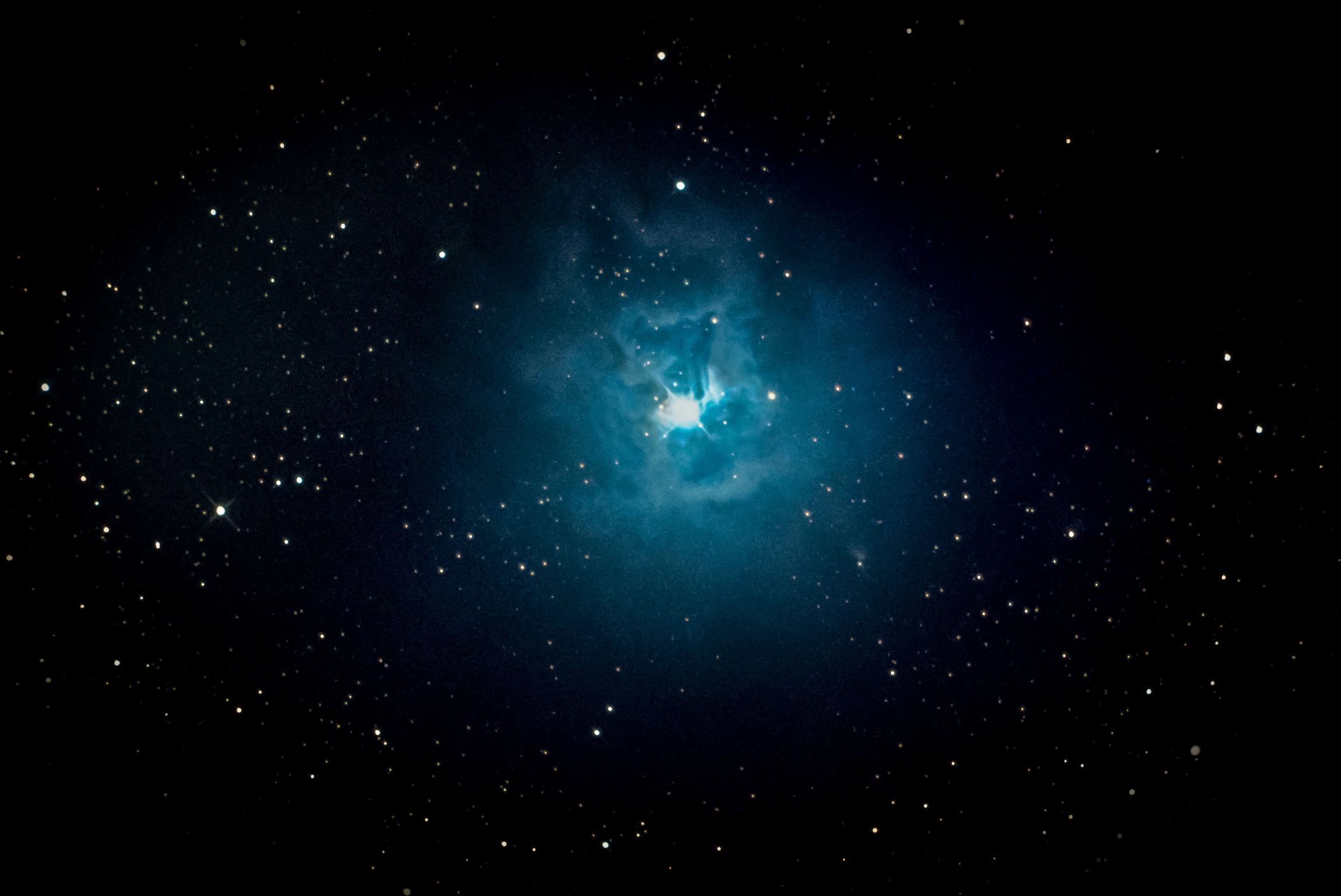
“Iris Nebula” is a bright reflection nebula in the constellation Cepheus.
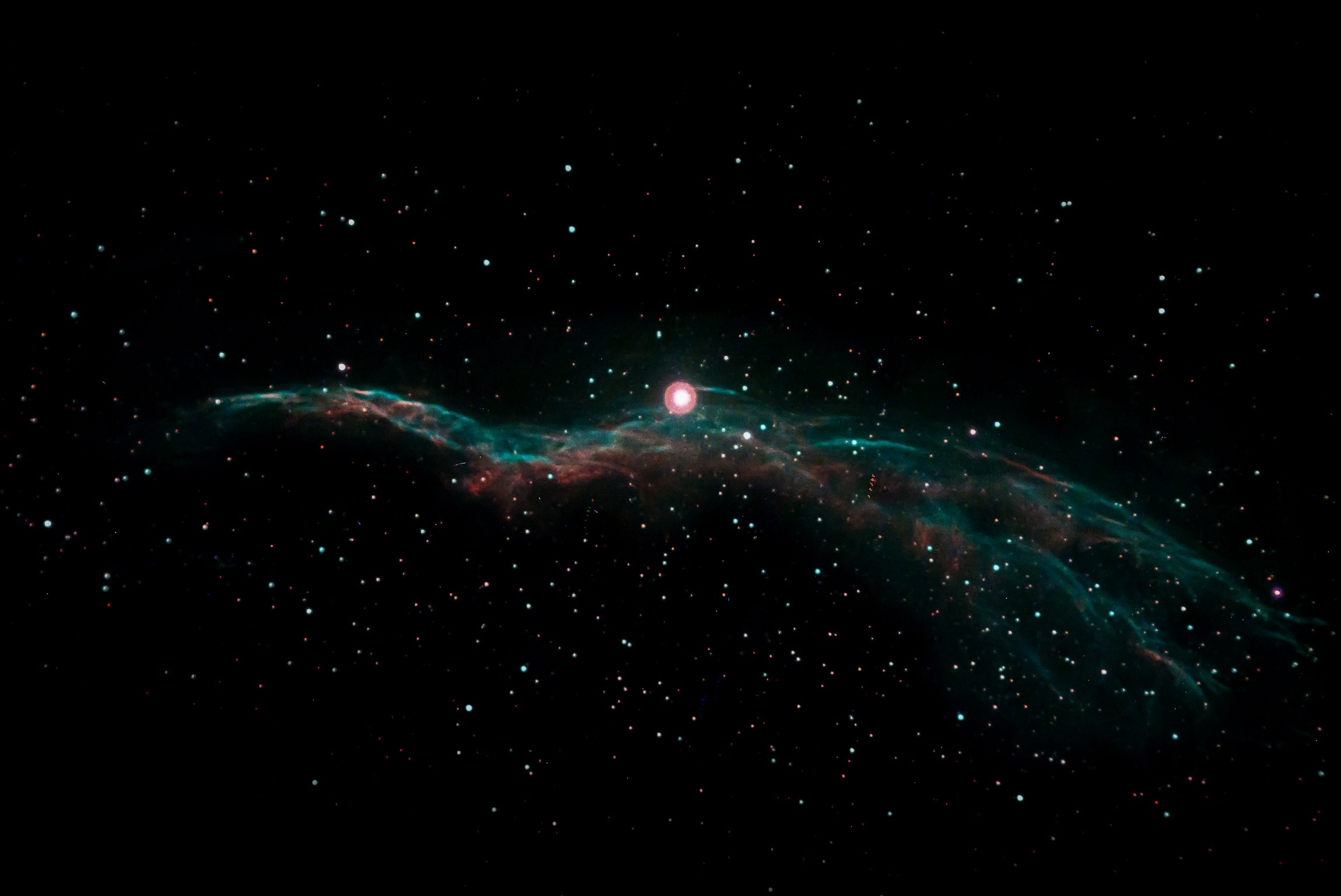
“Witch Broom Nebula”.The source supernova star was 20 times more massive than the Sun, which exploded about 20,000 years ago.At the time of explosion, supernova would have visible during day time.Analysis of emissions from nebula indicate presence of oxygen,sulphur and hydrogen which is strong emitter of X Rays.
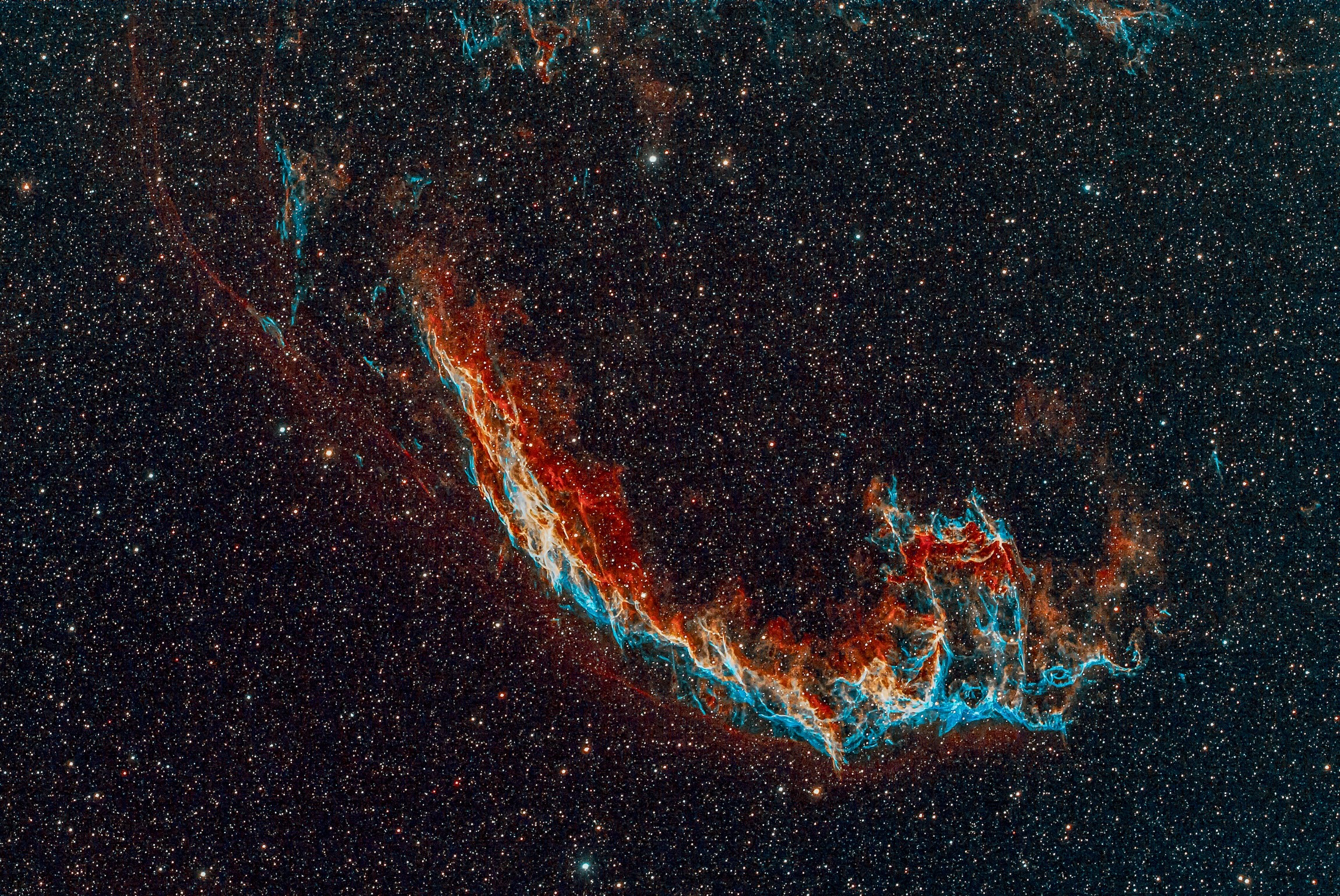
The Eastern Veil Nebula is a large supernova remnant in the constellation Cygnus. It is an expanding cloud created by the death of an exploded star. Scientists believe that the light from this supernova explosion reached Earth about 5000 years ago.
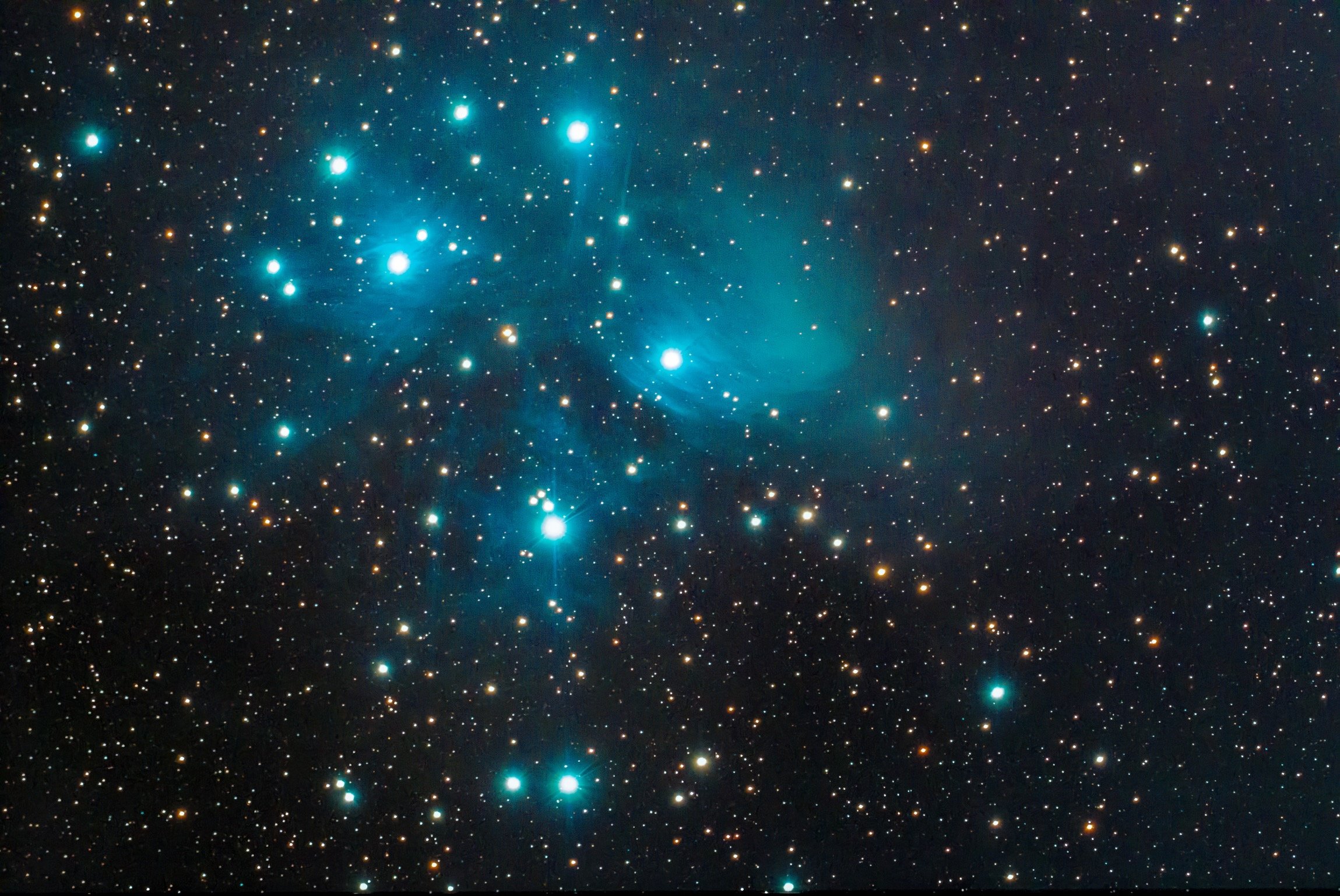
The Pleiades star cluster is also famously known as the Seven Sisters. Or, to some, it’s known as Messier 45 (M45) on the list of Messier objects. The Pleiades is visible from almost every part of the globe. It’s seen from as far north as the North Pole and farther south than the southernmost tip of South America. It looks like a tiny misty dipper of stars.
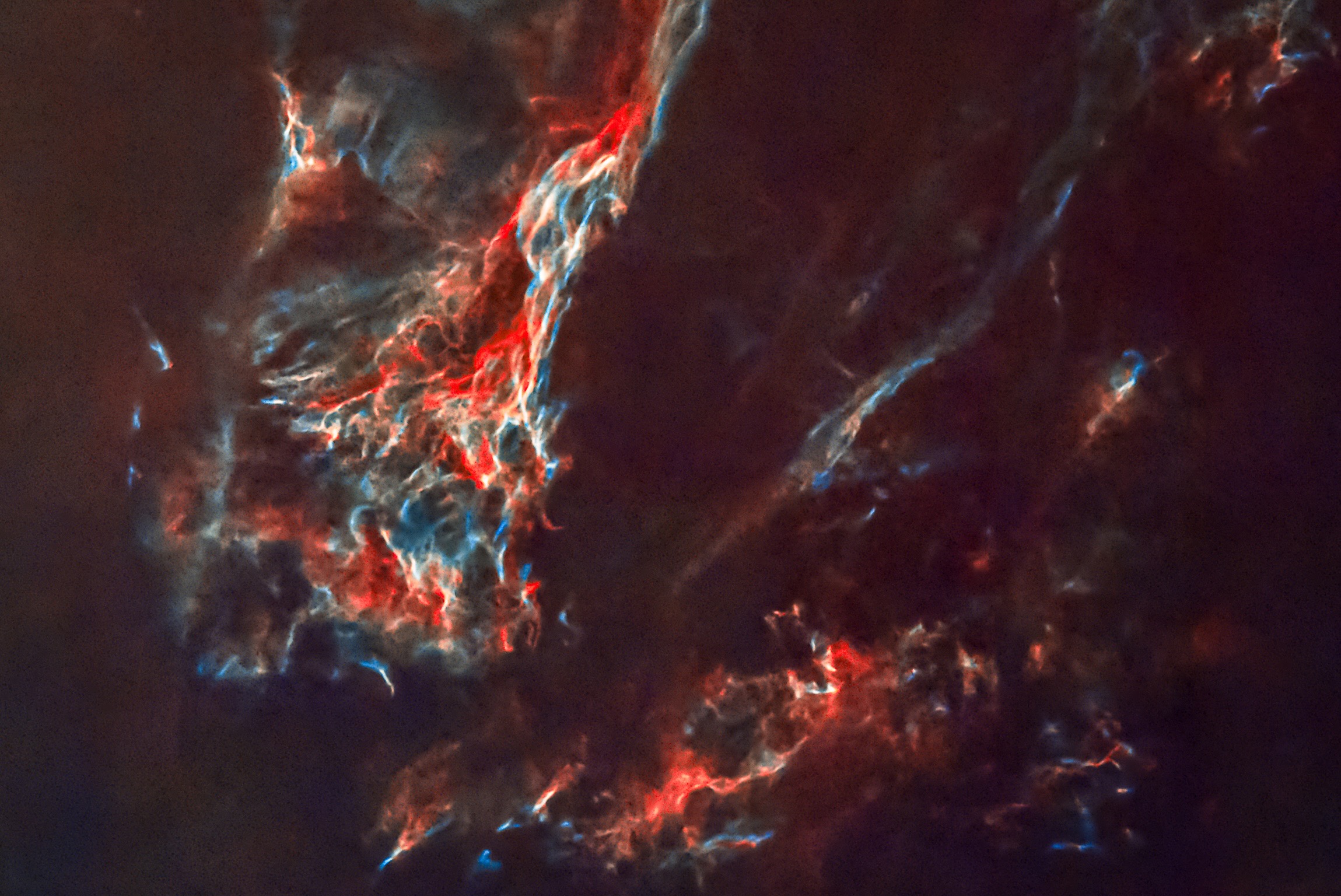
Selection of Veil Nebula photographed in starless field. Source Supernova was a star 20 times more massive than the Sun which exploded between 10,000 and 20.000 years ago. At the time of explosion, the supernova would have appeared brighter than Venus in the sky.
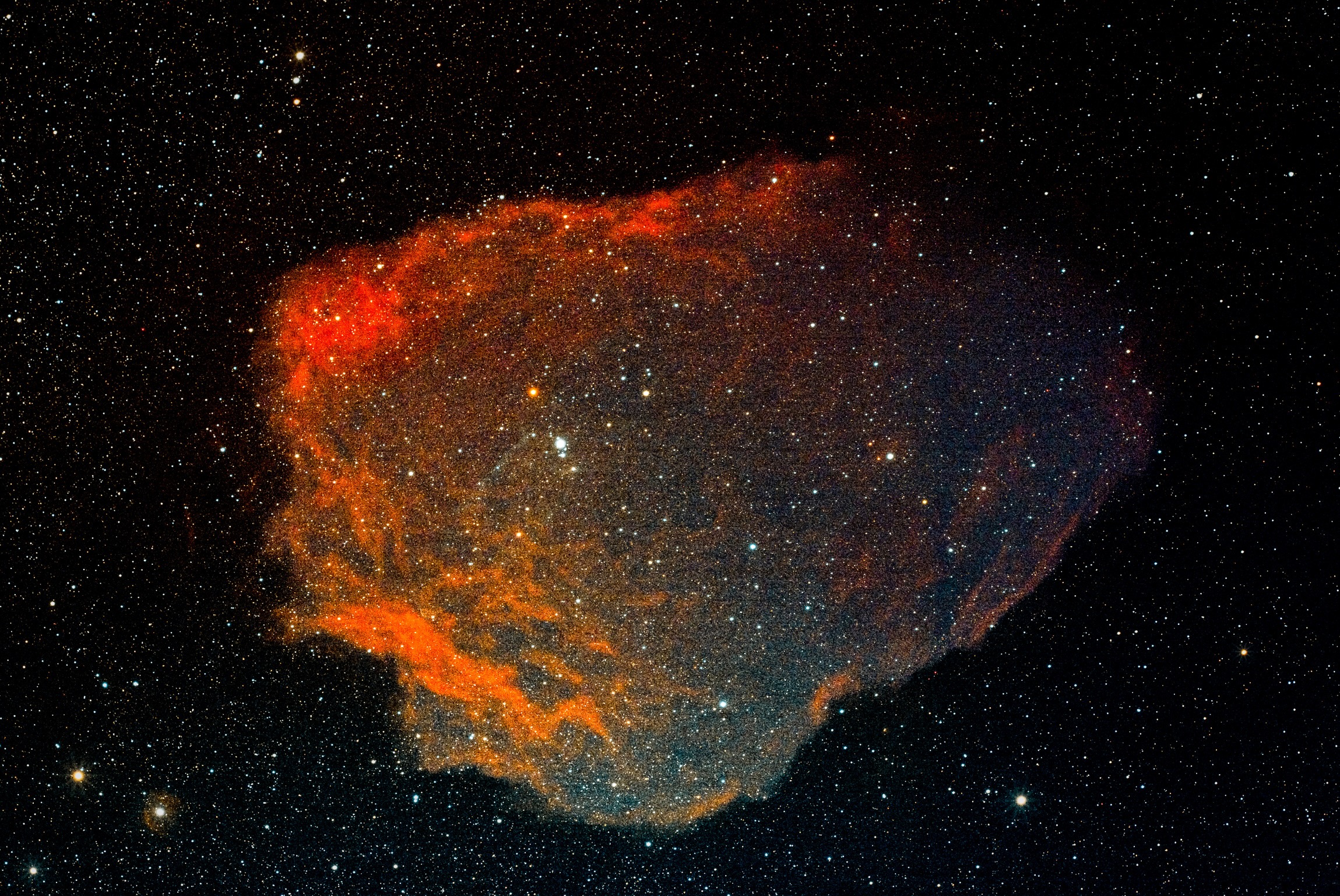
THE FLYING BAT AND SQUID NEBULAE. Around 2000 light-years from Earth is the Flying Bat Nebula (Sh2-129), seen here as a huge cloud of red hydrogen gas. Within this is the glowing blue Squid Nebula (OU4), thought to be a low-mass star near the end of its life, blasting its outer layers off in two opposite directions.
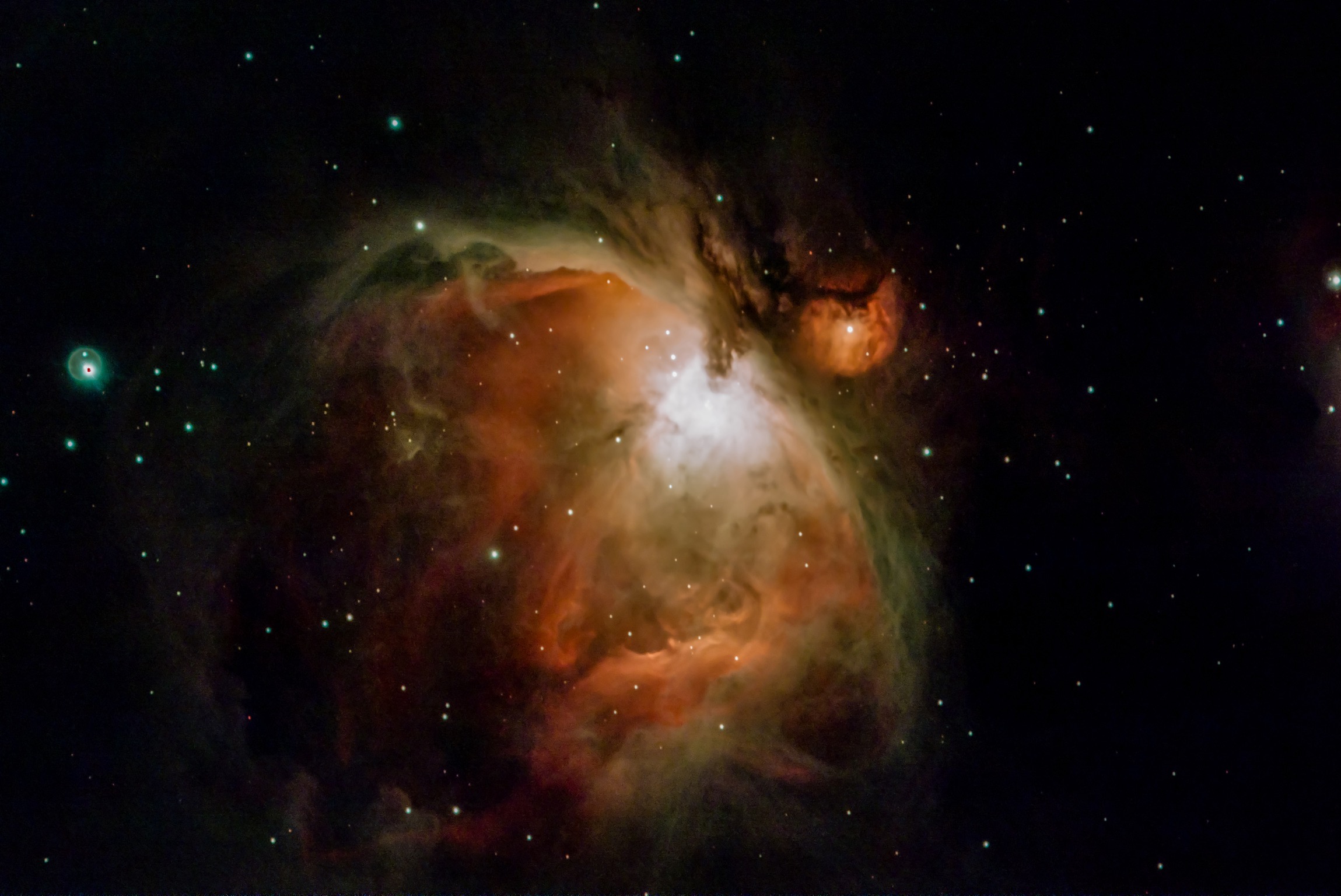
“Orion Nebula” 1500 light years away.The red hue is caused by hydrogen radiation, the green hue was a puzzle for astronomers, initially was named as the new element ‘Nebulum”,later it was determined ,it is caused by electron transition in ionized oxygen.This radiation was all but impossible to reproduce in the laboratory,it only happens in deep space.
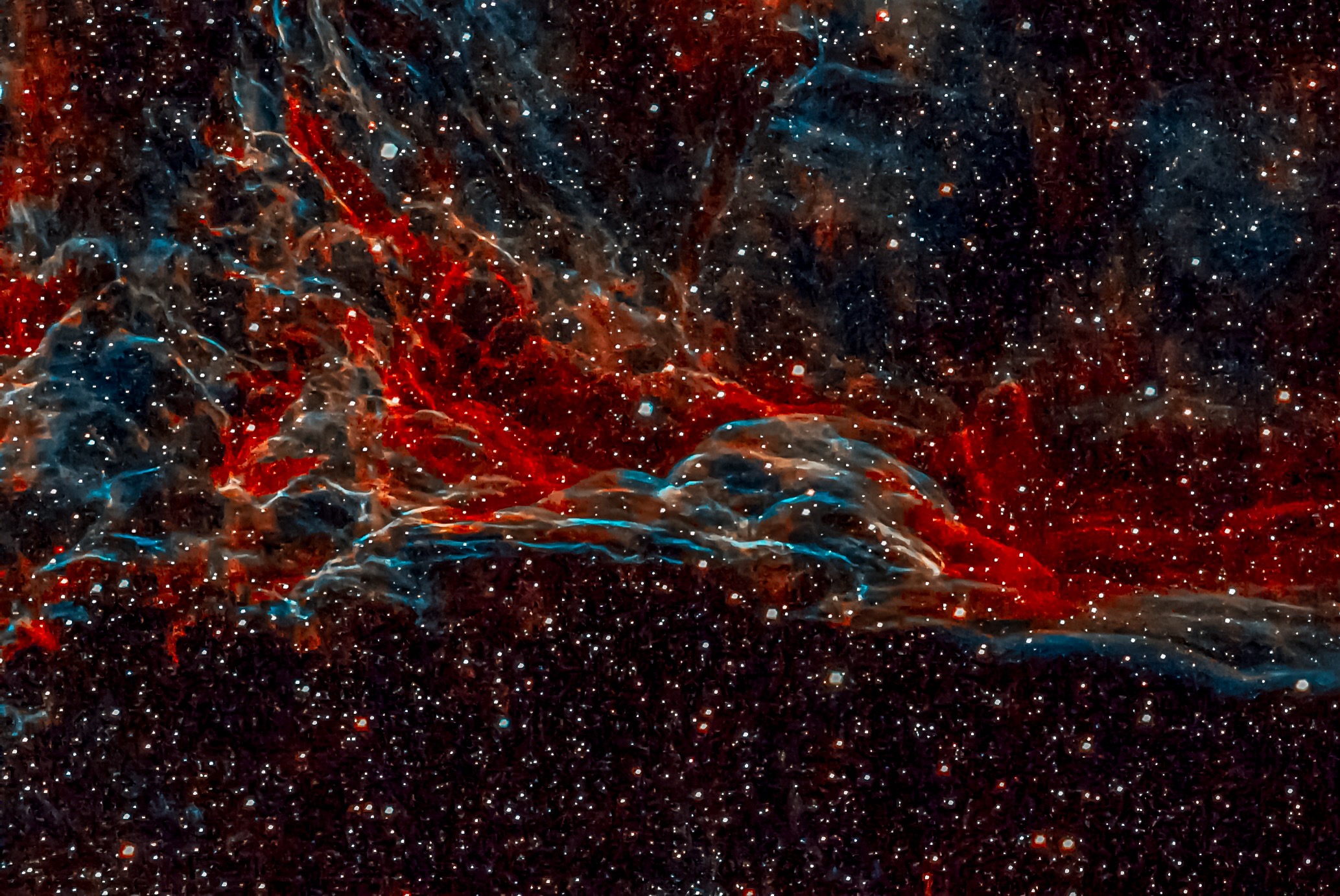
Another selection of Veil Nebula photographed in starless field. Source Supernova was a star 20 times more massive than the Sun which exploded between 10,000 and 20.000 years ago. At the time of explosion, the supernova would have appeared brighter than Venus in the sky.
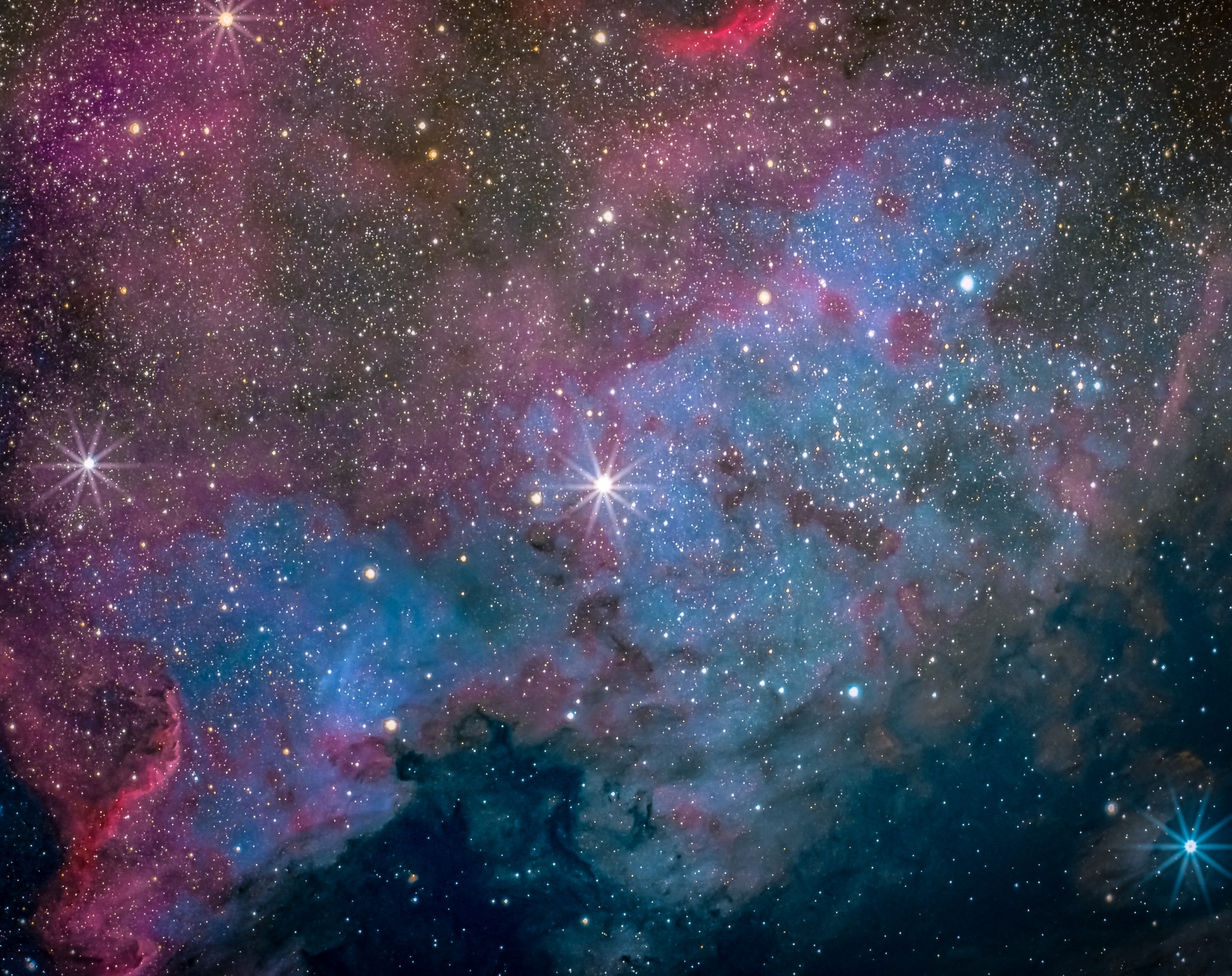
More a photographer’s dream shot than a visual treat, this is North America Nebula. The glowing gases and dark nebulae resembles the North American continent almost explicitly. Visually it can be spied through binoculars under a dark sky with averted vision, standing out as an enhanced region in the Milky Way.
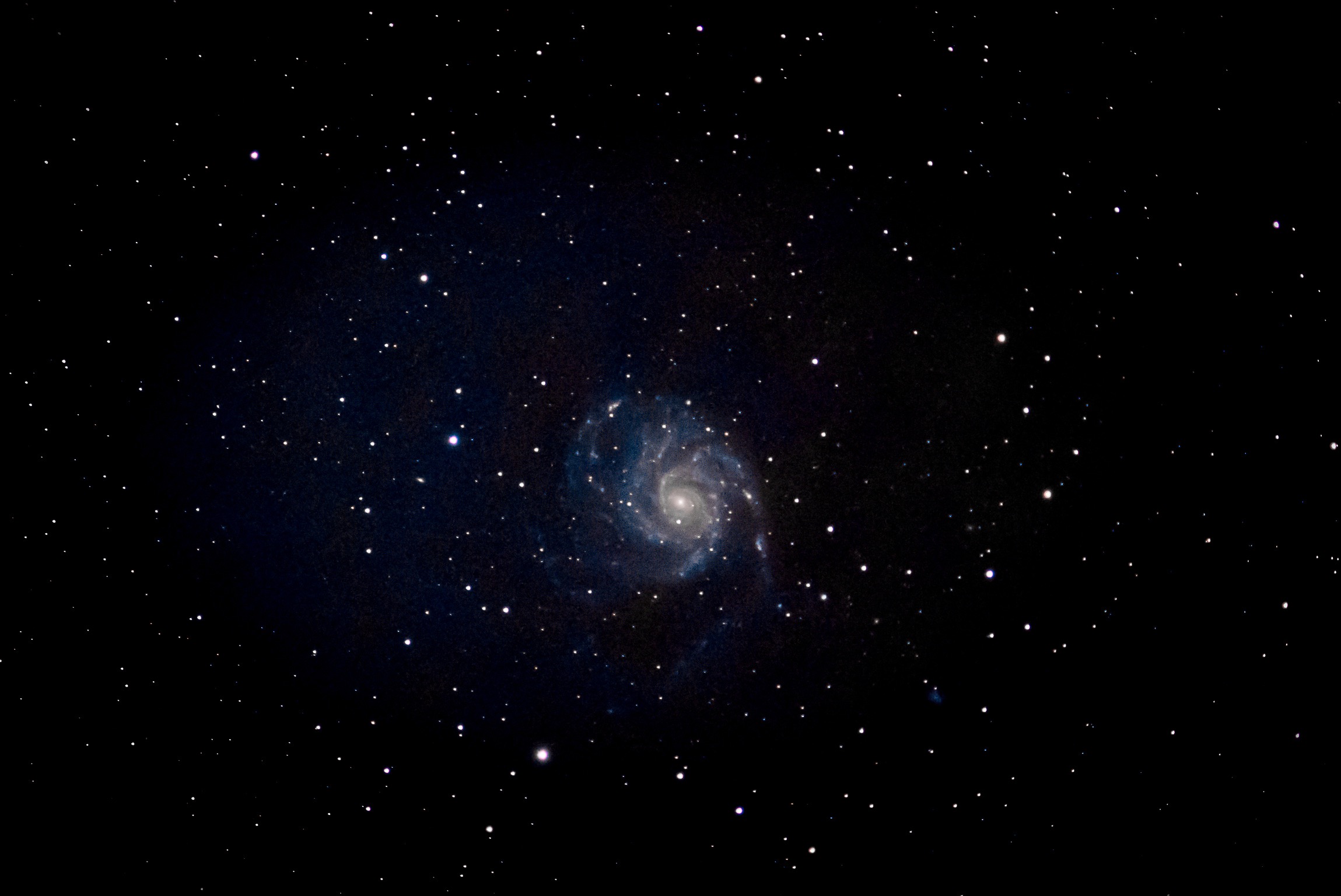
“Phantom Galaxy” 32 million light years away.It is an estimated mass of 10,000 Suns, this is an indicator of intermediate mass black hole.
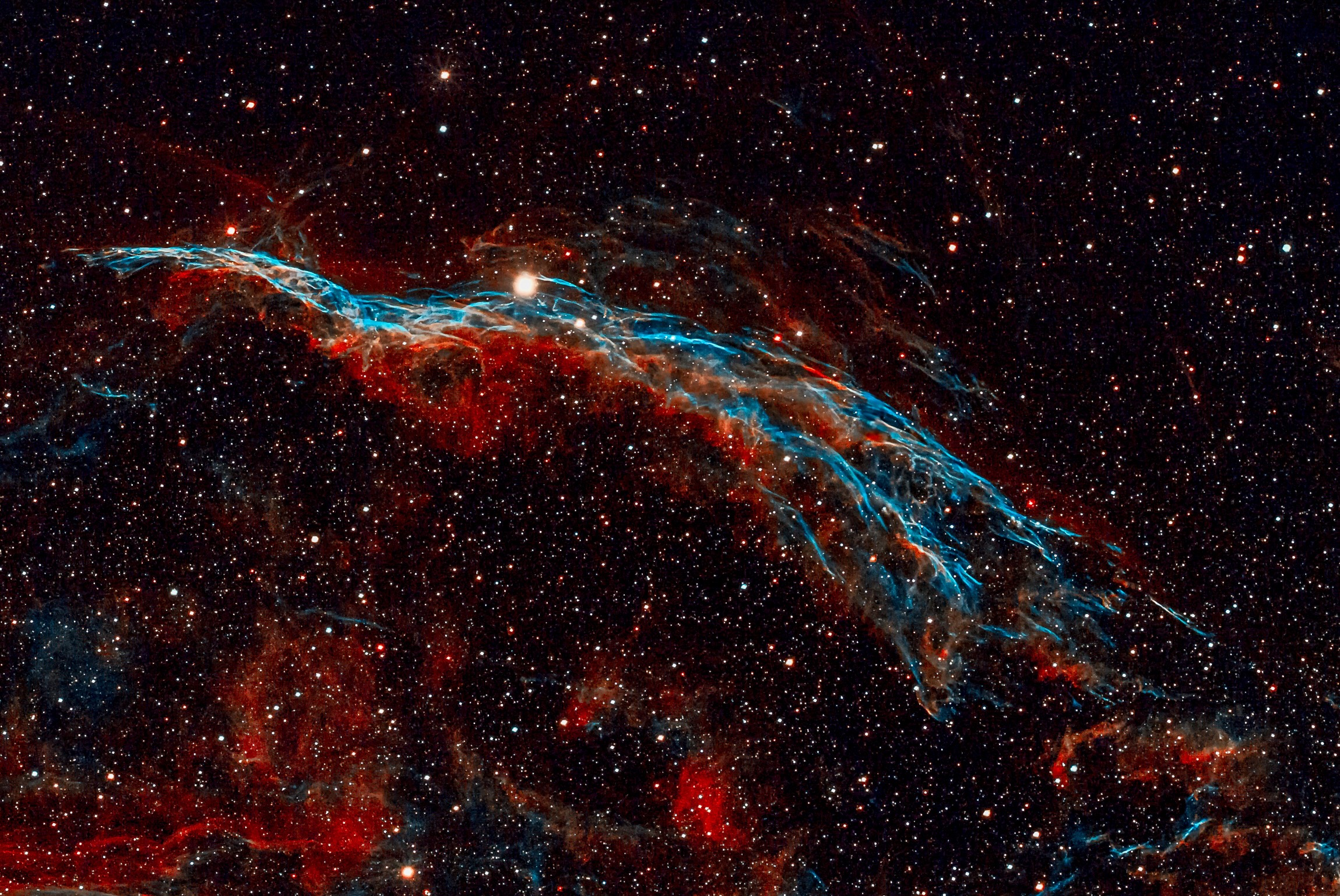
The Western Veil Nebula is a supernova remnant consisting of oxygen, sulfur, and hydrogen gas. This area of Cygnus is densely populated with stars and includes regions of heated gas that make up the Cygnus Loop.
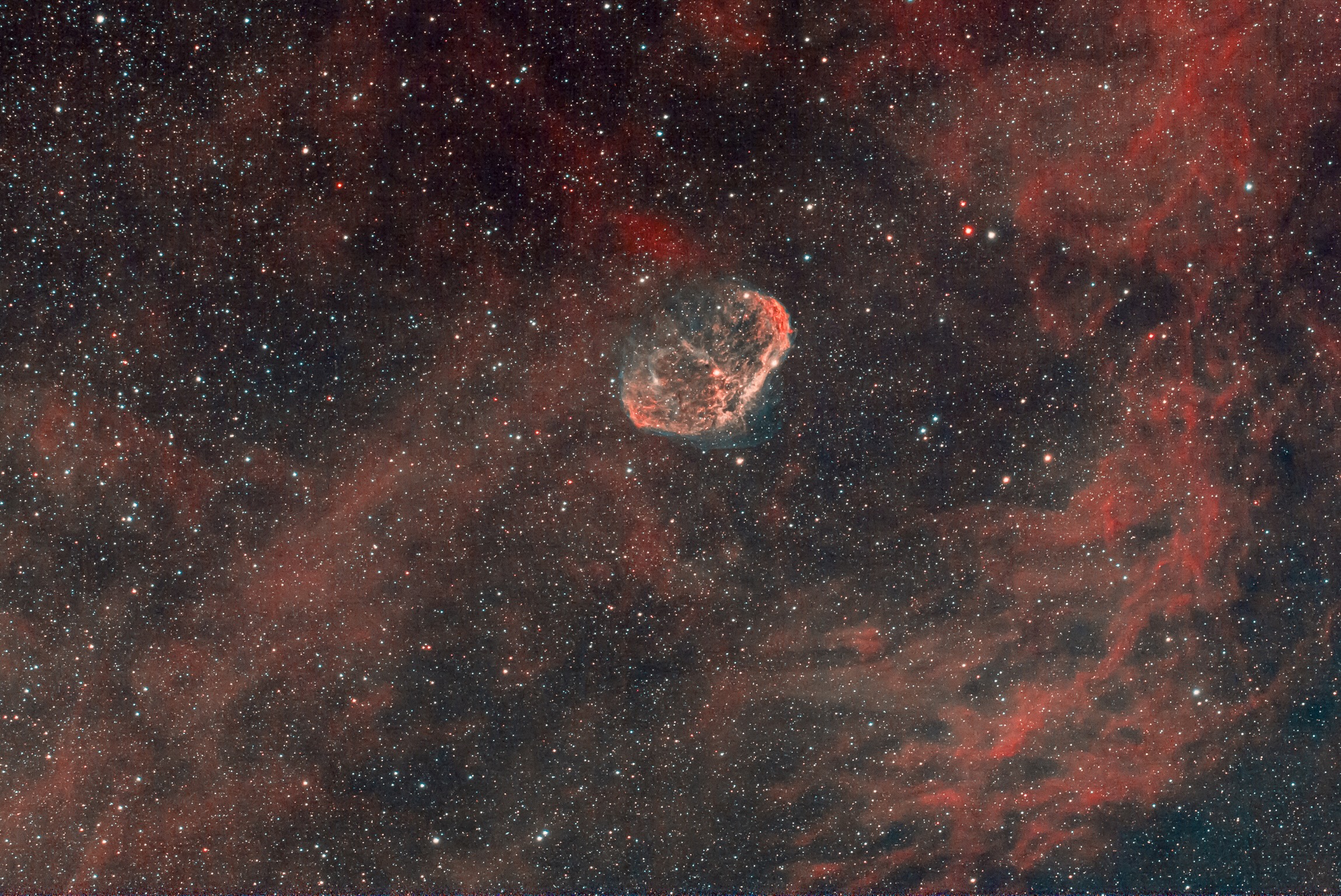
The Crescent Nebula is an emission nebula in the constellation Cygnus, about 5000 light-years away. It is cosmic bubble about 25 light-years across, blown by winds from its central, bright, massive star. It combines a composite color image with narrow band data that isolates light from hydrogen and oxygen atoms in the wind-blown nebula.
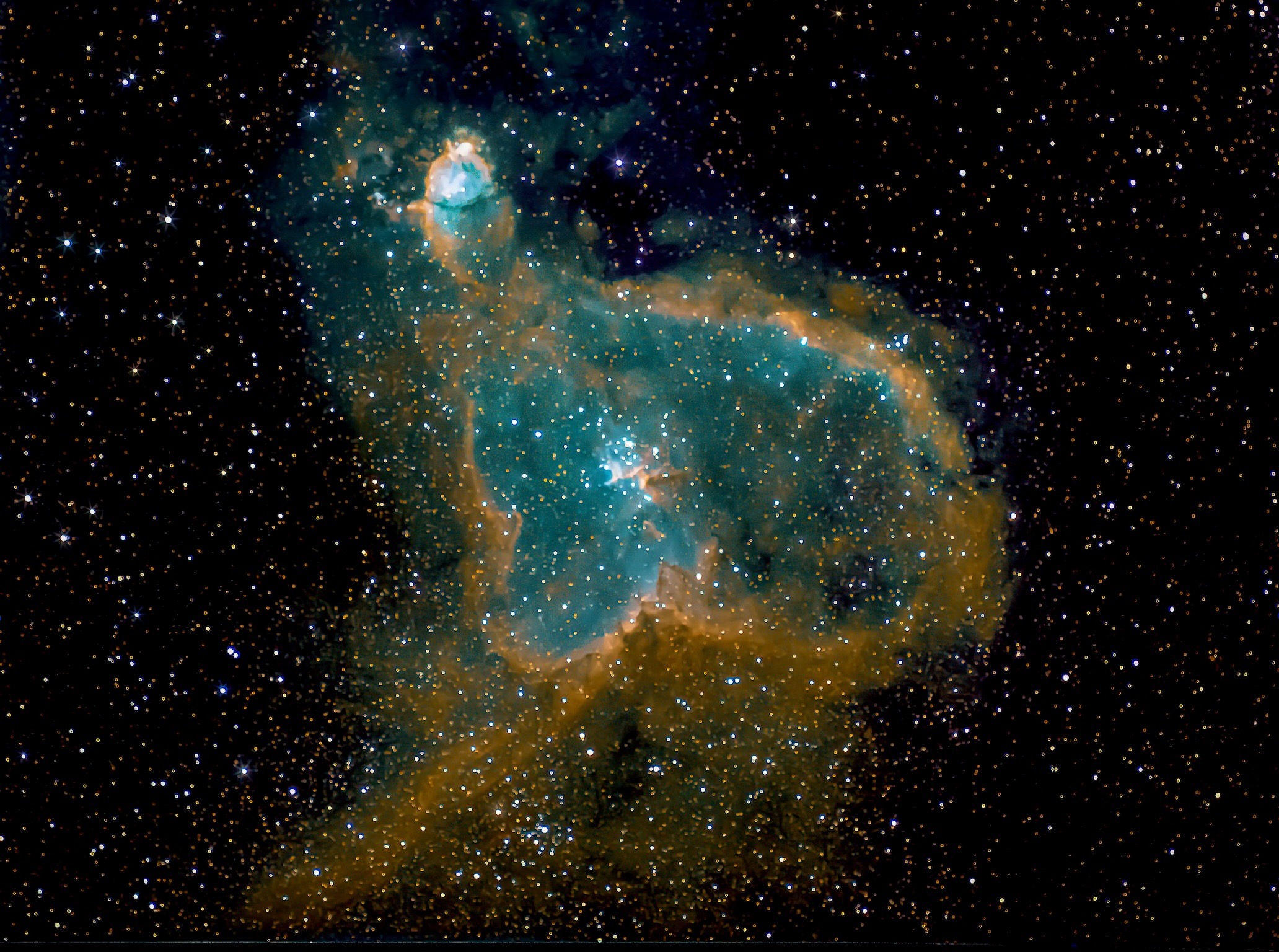
The Heart Nebula (IC 1805) is a large emission nebula in the constellation Cassiopeia. The beauty of this iconic astrophotography target is due to its mix of both bright hydrogen gas, and dark dust clouds. This glowing nebula gets its nickname from the familiar shape it resembles and is located approximately 7,500 light-years from Earth.
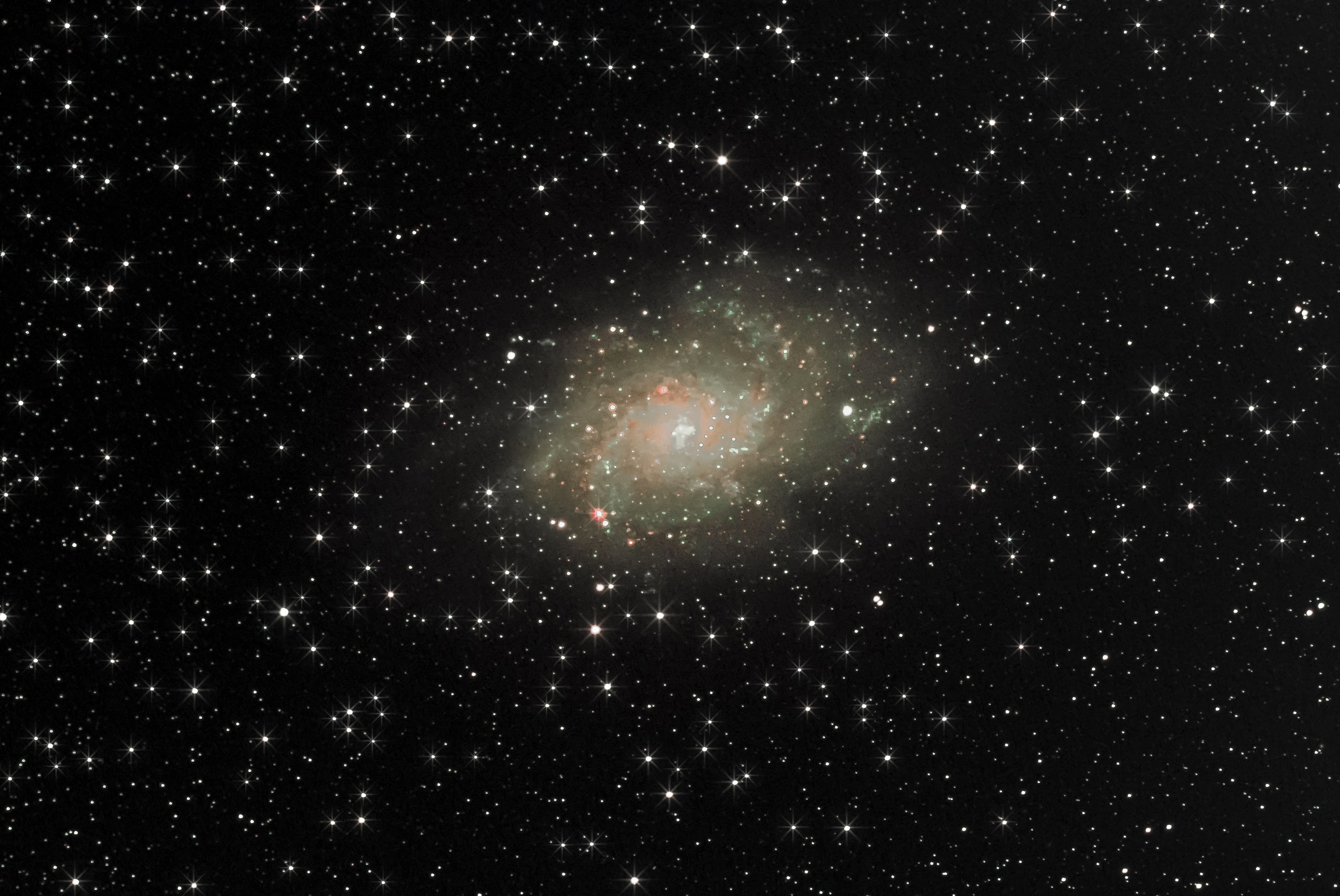
The Triangulum Galaxy is a spiral galaxy 2.73 million light-years from Earth in the constellation Triangulum. It is catalogued as Messier 33 or NGC (New General Catalogue) 598. With the D25 isophotal diameter of 18.74 kiloparsecs (61,100 light-years), the Triangulum Galaxy is the third-largest member of the Local Group of galaxies, behind the Andromeda Galaxy and the Milky Way.
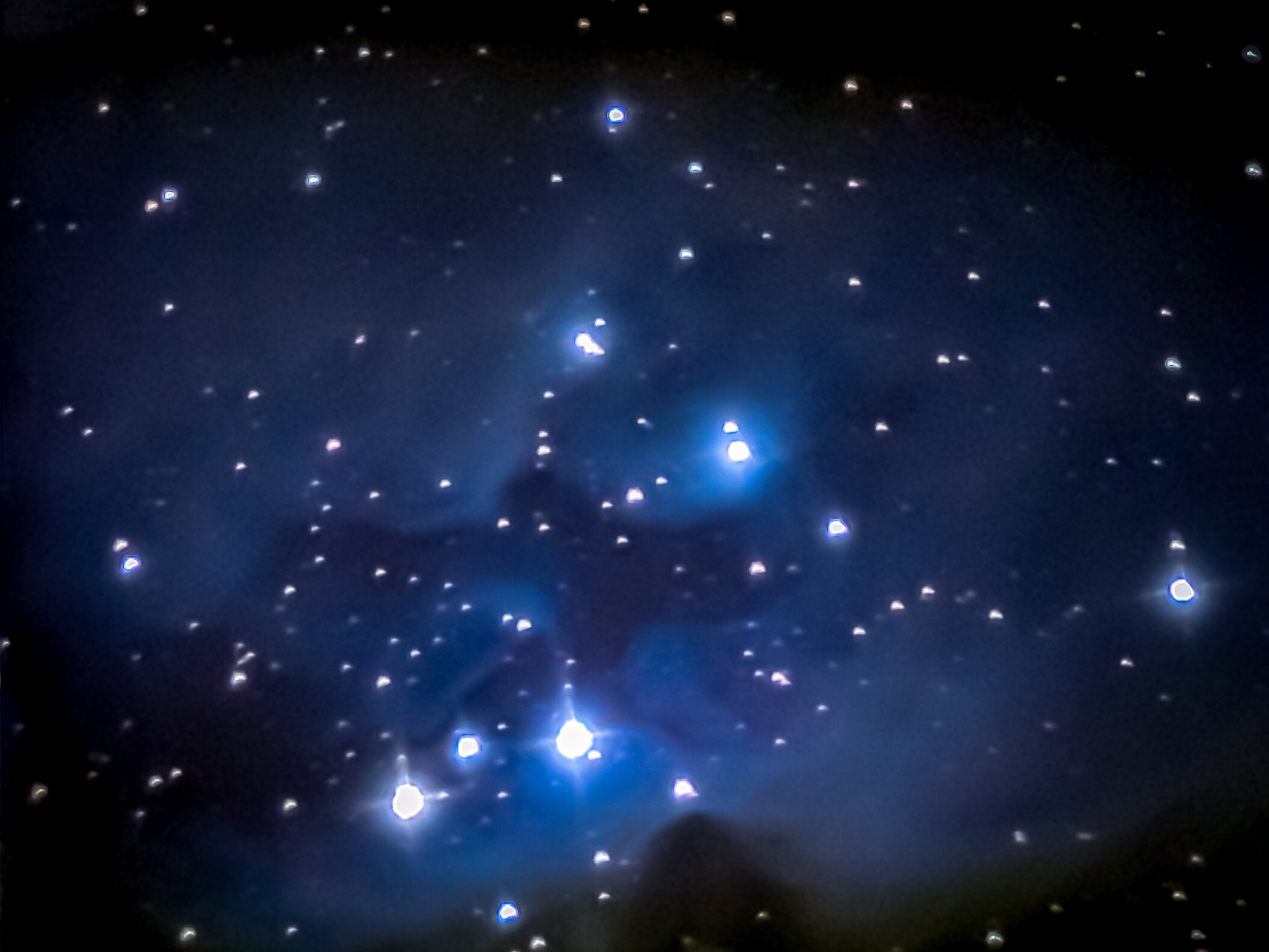
The Running Man Nebula, also known as NGC 1977, vaguely resembles a colorful space ghost sprinting through the stars in the Orion constellation. Located 1,600 light-years away from Earth, this cloud of interstellar dust and gas shares its cosmic neighborhood with two smaller nebulas, NGC 1973 and NGC 1975.



Most things in life are moments of pleasure and a lifetime of embarrassment. Photography is a moment of embarrassment and a lifetime of pleasure.
Copyright © 2023 Landskein Arts | All Rights Reserved
